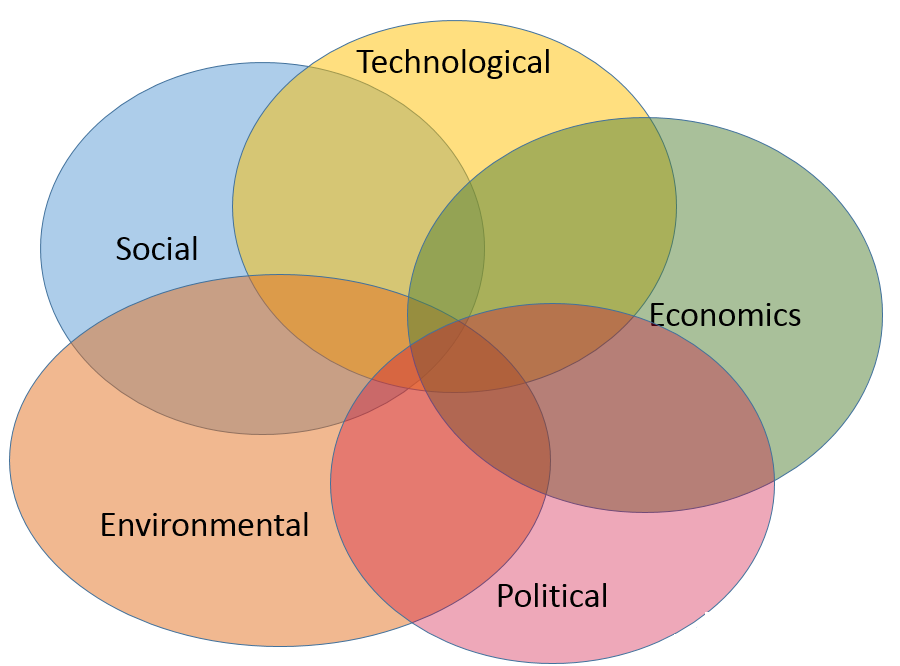This series of posts attempts to assist stakeholder communities at all levels to prioritize and explore the multitude of needs and issues that are at the forefront of Smart City conceptualization. Cities are built for people, and human factors must be considered in the smart city project planning process. It should help in defining stakeholder communities’ user needs, and ideally to build consensus around those deemed of greatest importance so that broad conversations, decision-making and successful project implementations can result.

There are five groups of human factors that must be considered in developing your smart city. These include social, technological, economic, environmental and political factors.
Social Factors include:
- Population growth
- Urban migration
- Aging society
- Mobile working
- Household patterns
- Inequality
- Employment
- Community cohesion
- Informal settlements
- Public health
- Education
- Individual safety
- Tourism
- Global middle class
- Well-being
- Sustainable behaviors
- Digital lifestyles
- Housing
- Infectious diseases
- Entrepreneurship
Technological Factors include:
- Automation
- Internet of Things
- Sensors and data
- Smart infrastructure
- Intelligent transportation systems
- Technology leapfrogging
- Energy efficiency
- Integration,
- Autonomous vehicles
- Microgeneration
- E-mobility
- Data connectivity
- Additive manufacturing
- Artificial intelligence
- The quantified self
- Intelligent buildings
- Cybersecurity
- Small-scale solutions
- Remote services
- Digital modeling
Economic Factors include:
- Regional connectivity
- Aging infrastructure
- Finance
- Circular economy
- Skills shortage
- User centricity
- Responsible business
- City resilience
- Digital economy
- Urban logistics
- Urban manufacturing
- Women’s economic influence
- Urban regeneration
- Small business
- Sharing economy
- Supply chain vulnerability
- Informal economy
- Self sufficiency
- City identity
- Economic growth
- Decarbonization
Environmental Factors include:
- Water management
- Food security
- Green infrastructure
- Ecosystem services
- Waste minimization
- Extreme weather
- Air quality
- Pollution
- Urban sprawl
- Recycling biodiversity loss
- Heat stress
- Sanitation
- Non-motorized transport
- Land use patterns
- Sea level rise
- Retrofitted buildings
- Infrastructure usage
- Transport motorization
Political Factors include:
- Global politics
- Competitiveness
- Privatization
- Public-private partnerships
- Collective consciousness
- Stakeholder engagement
- Public opinion
- Institutional capacity
- Transparency
- Leadership
- Urban governance
- Policing
- Devolution
- Building standards
- Electoral cycle
- Public space
- System interdependence
- Terrorism
- Subsidies
- Environmental policy
In our next post, we’ll discuss Social Factors in great detail, future posts will focus on technological, economic, environmental and political factors.




